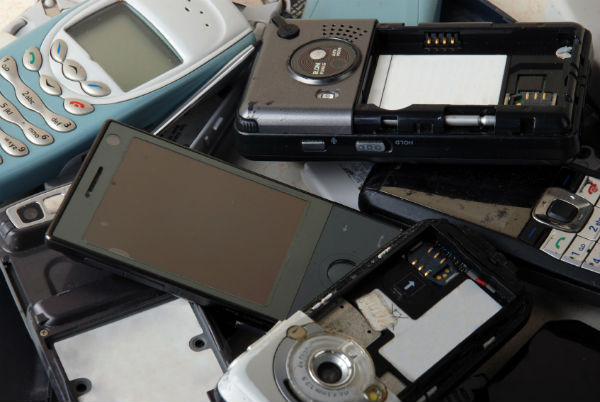
Do you know what’s in your cell phone? No, not the megapixels of the camera or the gigabytes of hard drive storage space — what is actually inside the cell phone — the circuit boards, the wires, etc. A bevy of chemicals, metals and the like go into making your cell phone. Some of the products used to produce the cell phone come from a section of the periodic table that contains 15 rare earth elements known as the lanthanides.
Without getting too technical, these rare earth elements are believed to be in somewhat limited supply, with the bulk of them located in China. Until the last decade or so, there wasn’t much concern with the world’s supply of lanthanides. However, there is increasing demand for these 15 rare earth elements as new clean energy technologies emerge. This includes advances in hybrid and fuel cell vehicles, energy-efficient lighting like CFLs and even wind turbines. Rare earth elements are also being used in high-tech consumer electronics, like your cell phone.
So, now more companies around the world need more lanthanides to meet consumers’ demand for electronics. However, there is a limited supply of these elements and exporting them is costly. Companies are going to need to find other sources for lanthanides, and this is where the concept of
urban mining emerges.
Urban mining is a great concept — e-waste is recycled and the precious metals are removed, refined and reused. This keeps toxic e-waste out of landfills and reduces our dependence on expensive-to-import metals. This includes the rare earth elements used in the high-tech industry like neodymium, europium, yttrium, cerium and terbium.
The process of extracting rare earth elements from cell phones is not as refined as the process used to remove gold, silver, copper and the like. However, companies around the world realize the importance of harvesting lanthanides from existing electronic products and are working to advance this technology. Harvesting these rare earth elements through recycling also prevents them from seeping into the ground and possibly causing problems for humans, animals and the environment.
Although neodymium can be toxic if inhaled in the working environment, the biggest toxicity concern comes when the element is allowed to accumulate in the body. If neodymium builds up in your body, it could be toxic to your liver. The more electronic waste that makes its way to landfills, the higher ground levels we will see. As is the case with all ground-contaminating products, it is only a matter of time before it makes its way into the human body. Recycling electronics can prevent this process.
To learn more about urban mining and the rare earth elements, read “
A ‘Gold Mine’ of Precious Metals in Discarded Electronic Devices.” In this article, Masao Yamada with Dowa Holdings and Yasuharu Yanai with Kosaka Smelting explain how their company is expanding their urban mining operation. Next time you’re ready to upgrade to a new cell phone, recycle your old phone so these rare earth elements can be extracted for future use.


